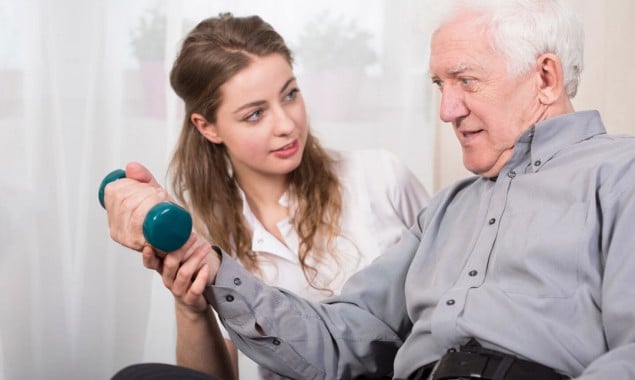Obesity causes reduced brain plasticity
A research conducted in UniSA and Deakin University shows that obese people...

Physiotherapists
Physiotherapists recommend regular strength training which helps prevent injury. It is advised to exercise at least five times a week for our mental and physical well-being. This does not always mean getting the heart rate up but also strengthening our muscles.
Physiotherapist Tristan Chai says developing more muscle mass helps with overall health as we need our muscles to be strong in order to not absorb the impact of movement in the wrong places. It is common to end up enduring such chronic pain.
“So if I’ve got really weak quads and glutes, if I go for a run, I’m going to use a lot of my calves. I’ll probably be a bit sloppy with my running and end up absorbing more impact through my hip and knee joints,” Chai explains. “So you want those muscles to be strong to support joints and also to optimize your movements.”
The following four functional exercises which one should be doing themselves every day. In case of injuries, one should seek specific advice before attempting a new exercise.
Michael Gilbert of Active Answers Physiotherapy in Sydney, says regular step-ups increase quad and glute strength, which helps protect the knees and hip joints. One step-up is as simple as stepping from the floor on to a bench or plyo box.
“The great thing about the step-up is it strengthens each leg individually, which can help to build muscles equally on both sides,” he adds. “Having better strength will also increase your balance, and then ultimately the stronger you are, the less injured you’re going to get and the lower the risk of falling will be.”
Melissa Haberfield, a researcher, lecturer and physio therapist to the North Melbourne Football Club AFLW team explained why doing a ‘bridge’ is important and how it’s done.
“A basic bridge is where you lay on your back with your knees bent and feet flat, you squeeze your butt-cheeks and you lift your butt up off the floor.”
This exercise targets our glutes which in turn helps with running or jumping sports. There’s also evidence that they can help with lower back, knee and hip pain.
Ebonie Rio from La Trobe University and the Victorian Institute of Sport supports the belief that calf strength is extremely important and can help protect us from injury.
“If you’re landing from a jump, they absorb most of the energy,” she explains. “So if your calf muscles aren’t very good, those forces will go somewhere else. They’ll go to your knee joint, or your hip joint, or your lower back.”
This exercise involves standing up upright, pushing through the balls of your feet and raising the heel until you’re standing on your toes. A wall can be used for support and balance.
A single leg stand requires you to sit, and then stand up using one leg. It’s a go-to exercise for Tristan Chai.
“I like it because it’s a functional exercise,” he says. “We all have to get from sitting to standing, so it’s super-relevant to day-to-day life.”
This exercise is good for all lower-limb strength, especially the glutes and quads. Chai said, “I give it to runners a lot because they’re always on one leg when they’re striding. It helps control their hip and knee to prevent overuse injuries.”
This exercise should be repeated at least thrice a week for athletes.
Catch all the Health News, Breaking News Event and Latest News Updates on The BOL News
Download The BOL News App to get the Daily News Update & Follow us on Google News.